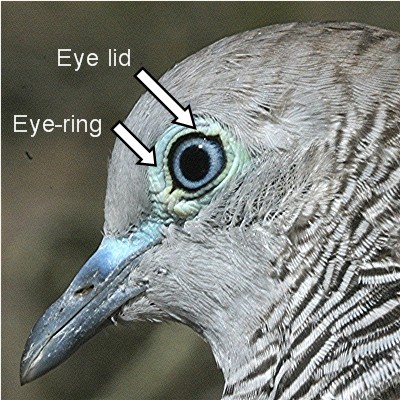|
I was interested in Philip's comment about nictitating
membranes (NBs), because one does sometimes notice them while doing a little
quiet birdwatching. In my earlier message I was not able to reproduce
the eye action as seen on video as clearly I would have liked, but it does seem
clear to me that each time the bird (or that particular individual) called it
momentarily closed its eyelids - not the ring, of course, which is the same
colour. I suspect other pigeons might do the same thing. The action
takes less than 0.5 sec, perhaps only 0.1 sec.

On the other hand when the NB is used, the eye can remain
open, although partly obscured, because the NB is semi-opaque - or
semi-transparent depending on how you look at it. I have many video frames
that illustrate this phenomenon, which might sometimes take less than 0.1
sec. If it were much faster the video would be unlikely to record it at
all, let alone the human eye. Digital video (as used in Aust) records at
25 frames per second, but the individual frame might be shot at say one
thousandth sec, so the bird could blink without the camera seeing it. When
it does record it, it is usually as a clear eye momentarily becoming
milky.
At this point I might throw in a little shot of a
Barking (aka Winking) Owl taken some years ago. The second frame shows the
eyelids closing and simultaneously the NB crossing the eye. In the bird's
left eye the NB is starting across as usual. I cannot explain why in
the right eye the NB is coming from a different direction and is straight-edged
when it should be movement-blurred - perhaps the NB on the left
eye was being activated and the one on the left came up partially in
sympathy.
|

